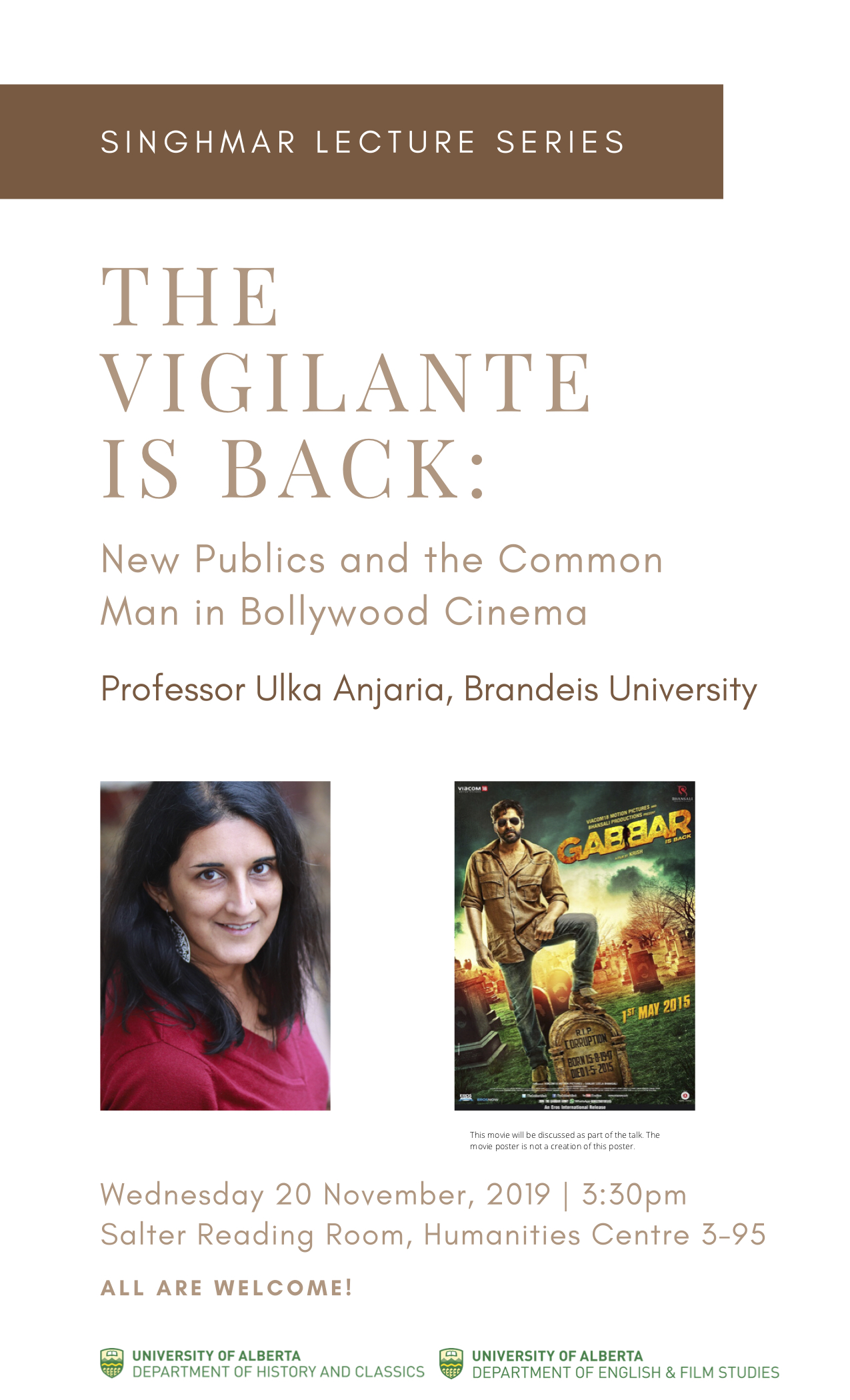
Bombay cinema of the 1970s is famous for the figure of the vigilante, who acted outside the law to avenge crimes that the police and the courts were unable to regulate. This viglante was known as the "angry young man" for his expression of masculine, subaltern rage. However, in the last decade we have seen the rise of new kinds of vigilantes in Hindi cinema, who reflect new forms of discontent with government corruption and the state's inability to deliver justice.
Today's vigilantes are more understated, acting out not personal vendettas but communal injustices on behalf of a new, as-yet unformed political constituency: the aam aadmi (or common man). These vigilantes are at times angry young men, but they are also older men, and often women. What do these new vigilantes tell us about new political formations in 21st-century India?
____________________
Ulka Anjaria is a Professor of English at Brandeis University. She teaches and researches South Asian literature and film, with a focus on India. Her first book was a study of progressive writing, a movement that became dominant in mid-20th century India. Her second book considers the relationship of contemporary (2000 and beyond) Indian literature and film to new politics in India. She is currently writing a book on Bollywood cinema.